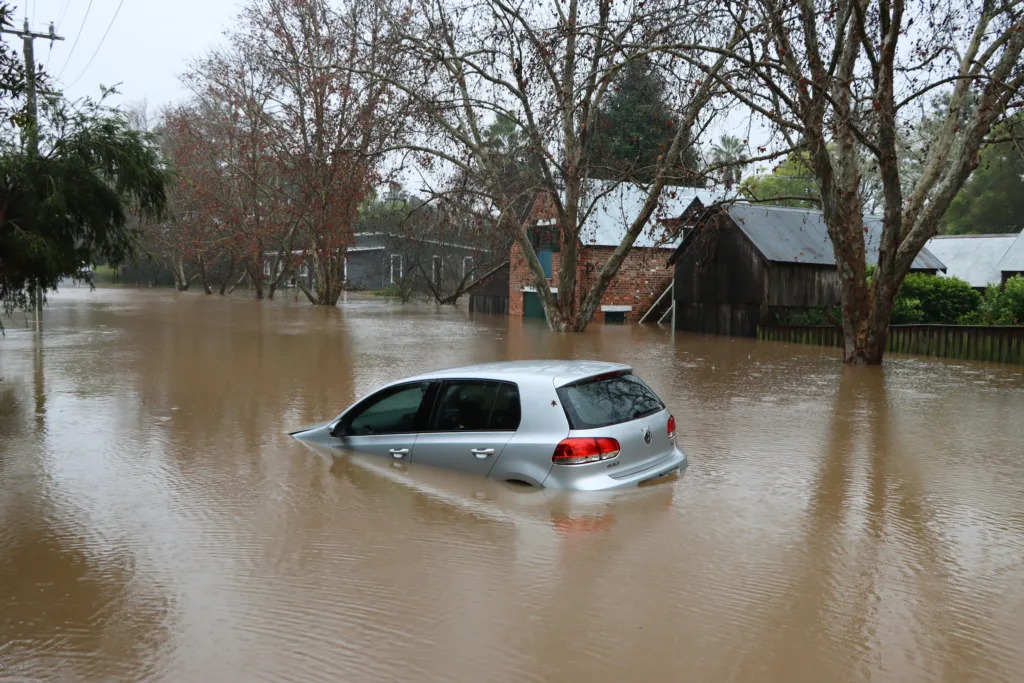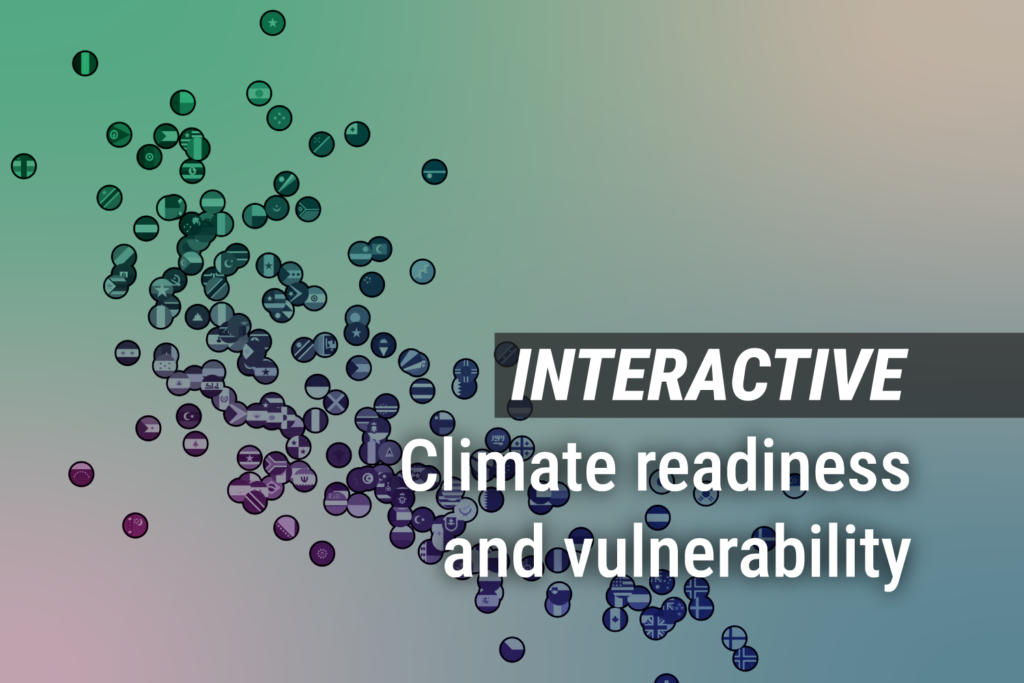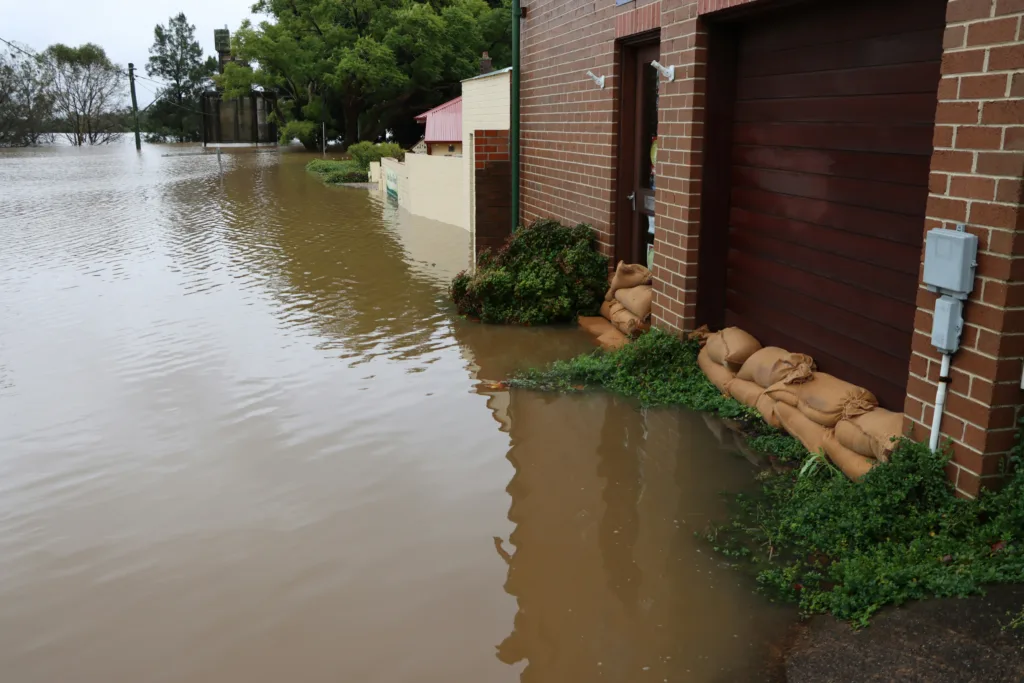Reducing emissions is only part of the story. We must also plan for adapting to the impacts of climate change.
 As climate-related weather events continue, conversations around adapting emergency management and urban planning are needed now. : Unsplash: Wes Warren Free to use
As climate-related weather events continue, conversations around adapting emergency management and urban planning are needed now. : Unsplash: Wes Warren Free to use
Reducing emissions is only part of the story. We must also plan for adapting to the impacts of climate change.
Most conversations about climate action in Australia centre on reducing emissions.
Yet reducing emissions is only part of the climate story: we must also plan for how we adapt to the impacts of climate change. How we adjust to rising sea levels, prepare for heatwaves, and manage changing rainfall patterns is what makes nations resilient in the face of climate change.
The floods that devastated north Queensland in December 2023, northern NSW in 2022, and 2020’s Black Summer bushfires show that Australia needs to step up its conversation how it plans to adapt to the impacts of climate change.
But in Australia, where climate change has been a longstanding political issue, legislation on climate adaptation has been slow.
As the Australian government prepares to release its Issues Paper for its first National Adaptation Plan in coming months, it’s a good time to reflect on why Australia has lagged on climate adaptation legislation — and what’s needed to make its plan a success.
Australia’s lagging, but the plan is afoot
National Adaptation Plans (NAPs) are a key tool for identifying country-level priorities for climate adaptation. They were developed as a mechanism to accelerate adaptation planning at the United Nations Framework Convention on Climate Change (UNFCCC) COP16 in 2010. Since then, around 70 countries have developed one.
While the most developed countries (including Finland, Norway, Switzerland, the UK and New Zealand) and around 40 developing countries (including Chad, Fiji and Sudan) have developed plans, Australia’s progress on climate adaptation has been slow.
Under the Morrison Coalition government in 2021, Australia did submit a National Climate Resilience and Adaptation Strategy to the UNFCCC. But it was never legislated, and consisted mainly of existing initiatives.
The Albanese Labor Government made a major commitment to climate change adaptation in its 2023-2024 Budget, with a significant focus on completing a National Climate Risk Assessment and National Adaptation Plan.
That plan is underway: With consultations in 2023, the government is set to release an Issues Paper in early 2024. This will support broad public consultation throughout 2024, and an anticipated NAP completion in time for the COP29 conference in Baku in November.
Three key reasons for slow progress
Australia has lagged on climate adaptation because climate change, and climate science, have been longstanding political footballs.
We got off to a good start with the 2007 National Climate Change Adaptation Framework agreed by the Council of Australian Governments (COAG) which was followed by significant investments in the National Climate Change Adaptation Research Facility. Yet, with a change of government, climate change became a marginalised issue for years.
When former Prime Minister Scott Morrison revealed his 2021 climate adaptation strategy, he was criticised for engaging multinational consulting agency McKinsey — which has advised 43 of the 100 biggest corporate polluters — to do the modelling rather than Australia’s national science agency, the CSIRO.
Climate adaptation has not been a priority due to other policy issues . But Australia’s slow progress with developing a NAP rests partly on the myths that a focus on adaptation reduces any ambition to reduce emissions, and that adaptation is mainly a local issue, best dealt with at the local government level.
These are both incorrect: adaptation and mitigation are both core climate actions, and all levels of government have a role in climate adaptation.
These assumptions are now changing. There are plenty of opportunities for a range of stakeholders to lead in climate adaptation. Many state and local governments have, in fact, already developed climate adaptation plans and strategies, signalling an increasing understanding that urgent climate adaptation is needed.
Why adaptation plans matter
Critics of the NAP have questioned whether the Albanese government’s multimillion-dollar commitment is worth the investment. But there are several ways in which a truly national plan — as opposed to only local and state strategies — could benefit Australia.
Without an adaptation plan, a country would have a hard time understanding its national risks, priorities, and progress.
Making decisions and national policy without a comprehensive NAP is likely to sideline climate change’s impacts – skewing planning budgets by not incorporating damages in the costs.
For example, Australia can lock itself into long-term infrastructure investments that seem economically viable but if the impacts of climate change on that infrastructure are overlooked, in reality, that plan would lock in increasing vulnerability.
Building new roads in a changing climate, for example, means that building materials might have to withstand increased heat in the future, which requires a different consideration of current and future costs .
Australia’s adaptation plan has the potential to shed light on how climate impacts can increase inequality and inequity across the nation due to the uneven distribution of vulnerability.
Without a NAP, policies can project an inaccurate picture on the roots of inequality and the potential of current policies to fix it.
Any increase in inequality can have dire consequences on people’s security and, potentially, political stability.
NAPs are critical in assessing the progress in adapting to climate change, including tracking progress on how climate adaptation is reducing impacts on the most vulnerable and marginalised groups.
NAPs often also signal key issues for researchers and industry, showing where more research is needed to enable evidence-based decisions, as well as the range of the most promising and scalable adaptation strategies and initiatives that could fast-track adaptation progress and implementation.
But a plan alone is just a plan
Having a NAP does not guarantee progress in adapting to climate change. Key questions for Australia include how the plan is to be implemented and financed, and how priorities will be identified and scaled up to deliver the largest reductions in vulnerability.
Answering these questions effectively will require a strong focus on innovation, bringing diverse knowledge and experience .
Many countries have chosen to enshrine climate adaptation into law to ensure that efforts are not stalled due to changes in government.
The UK, for example, has a Climate Change Act (2008) that created the Climate Change Committee and the National Adaptation Program, along with its regulatory reporting mechanisms and timeframes. This approach recognises that climate adaptation is not just a “nice to have” when a government feels like it but , a necessity with long-term backing as a policy issue. It is an approach Australia could certainly consider.
Going forward, adaptation to the impacts of climate change must be considered across all sectors.
Australia’s agriculture sector may need to plan for food insecurity issues, which may mean changing or diversifying crops for more water-efficient farming.
The energy sector has far to go to ensure climate adaptation. While there are advantages and opportunities to tap into — for example, Australia is the world’s largest exporter of lithium, which is used for batteries – the country is also a major emitter of, and source for fossil fuel resources.
It’s not only the largest net exporter of coal, but also the world’s largest exporter of liquified gas — another source of greenhouse emissions. Direct mapping of Australia’s emissions and their impact on vulnerability further underline the need for energy sector reform.
There are concerns about Australia’s unique biodiversity. The Great Barrier Reef, the world’s largest coral reef, is vulnerable and it’s the only developed country that is classified as a deforestation hotspot.
Urban planning and emergency management must also adapt. From early warning systems, to not building in areas with high risks of bushfires or floods, change is needed.
Australia must also reckon with how the changing nature of disasters and long-term trends, such as droughts, are putting Australian communities at increasing risk. For communities that have experienced extreme weather events first-hand, such as Lismore, these conversations are now critical. Climate resilience therefore includes planning for the future in a way that helps communities at at-risk locations to stay safe and well.
Dr Johanna Nalau is an adaptation scientist and Associate Professor at Griffith University based on the Gold Coast. Her research is focused on understanding how, why and when people make decisions to adapt to climate change, and what role science can play in that process. She also leads the Adaptation Science Research Theme at Cities Research Institute at Griffith University.
Originally published under Creative Commons by 360info™.
Editors Note: In the story “Climate resilience” sent at: 31/01/2024 11:32.
This is a corrected repeat.














